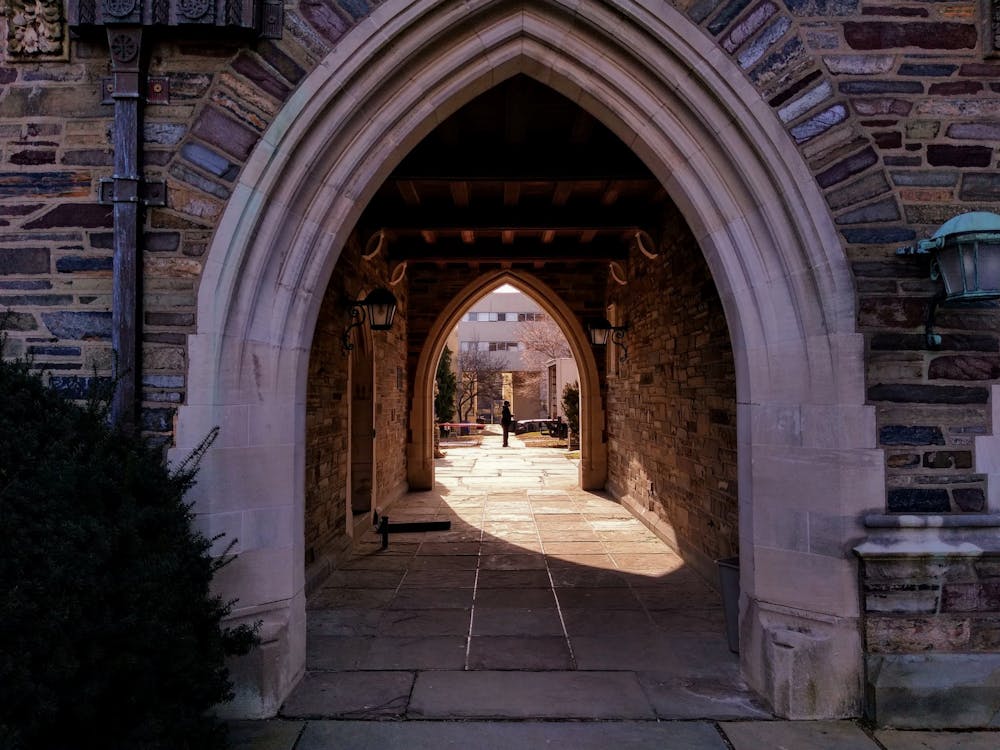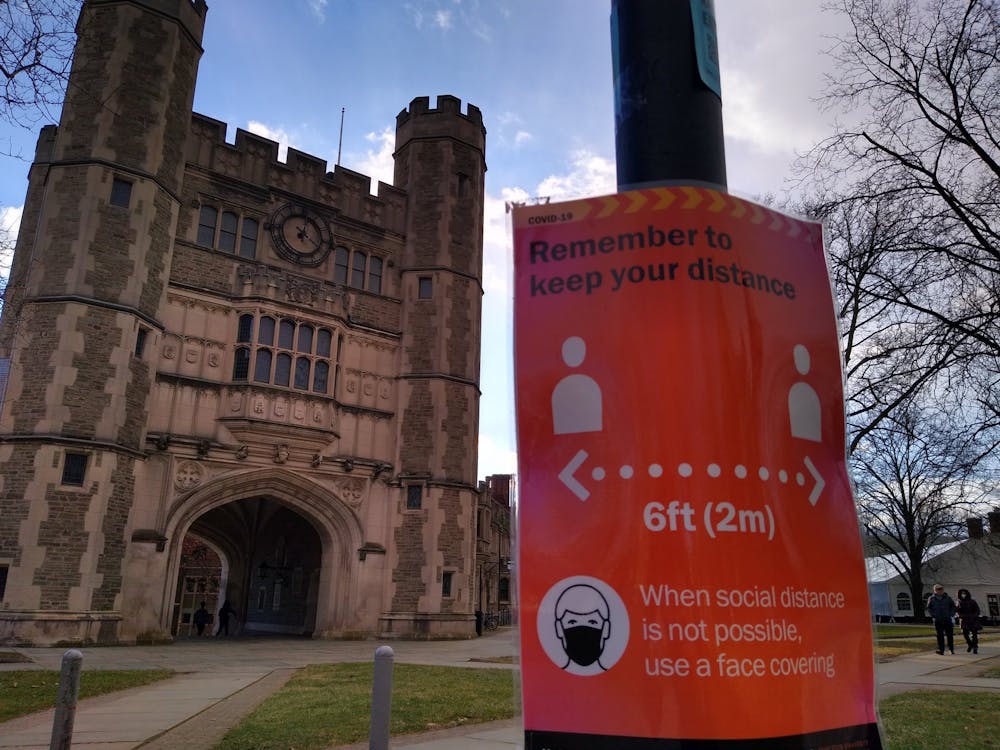Between Saturday, Jan. 16, and Sunday, Jan. 24, approximately 2,887 undergraduate students moved onto campus for the spring semester, taking part in a mandatory University testing and quarantine program to prevent the spread of COVID-19.
As of early December, around 3,400 undergraduate students had submitted their intent to live on campus. In the intervening weeks, roughly 500 students decided not to return to campus — but the 2,887 remaining undergraduates arrived on campus as planned.
Those returning to campus signed up for a move-in time slot and prepared to take a COVID-19 test upon arrival before entering into a weeklong quarantine period. After their first test results, students were asked to remain in their designated sleeping space each day, except for twice-daily trips to pick up prepared meals and a one-hour “daily walk.”
The Daily Princetonian asked a few undergraduates about their experience with the campus move-in process.
Some students were initially concerned about move-in and quarantine logistics and safety. Justin Ong ’24 told the ‘Prince’ that “as an international student, I was quite worried, especially given the situation in the U.S.”
Since November, the United States has been in a “third wave” of COVID-19, experiencing its highest-ever rates of positive cases. The same is true for New Jersey, which reported over 4,000 new cases per day for much of the last two months.

However, once arriving on campus, Ong, Mariela Pineda ’24, Giao Dinh ’24, and Kartik Shah ’23 found the initial move-in process, which took place at Jadwin Gym, to be safe, smooth, and efficient.
The move-in process involved checking into campus and completing the first of three required COVID-19 saliva tests during the arrival quarantine period.
“After you’re done, they clean the section before they invite another student to come in,” Pineda explained.
Dinh noted that the “entire process took a maximum of 15 minutes.”

Shah told the ‘Prince’ that move-in was also accommodating to students’ schedules. After his flight landed two-and-a-half hours early, he was permitted to begin move-in without having to wait for his assigned time.
After check-in, the first COVID-19 test, and move-in, students began a brief period of strict quarantine, during which they were required to remain in their dorms. After receiving a negative result for the first test, students began a one-week modified quarantine phase. During this time, students are allowed to go on a one-hour daily walk, pick up bagged meals and packages, and drop off saliva samples for their remaining two COVID-19 tests of the quarantine period, which take place on the third and fifth days of quarantine.
Many students, including Archika Dogra ’24 and Tanushree Banerjee ’24, noted that it took around a half day to receive their first COVID-19 test results and, once confirmed to be negative, begin the modified quarantine phase.
During quarantine, Heather Gaulke ’22 stated that while she’s “been a little bored at times,” she passed the time by doing a paint by number kit while listening to an audiobook, calling people on Zoom, and going on daily walks.
Laura Molina ’21 has been spending her time “working on [her senior] thesis, preparing for interviews, FaceTiming [her] family, or taking breaks and playing Among Us with friends.” She also mentioned appreciating the free resistance band supplied to arriving students by Campus Recreation for indoor workouts.
Pineda said that between enjoying time inside her dorm and going on walks around campus, “quarantine is not as bad as I expected it to be.”
Banerjee and Dogra told the ‘Prince’ that daily walks provided an opportunity to explore campus for the first time.
“[I’m] still in awe of the place,” Banerjee said. “It’s magical.”
Dogra described feeling “overwhelmed” by the variety of architecture on Princeton’s campus, and she said her daily walks helped prevent quarantine from feeling “suffocating.”
Nearly all undergraduate students living on campus were put on the University meal plan for the spring semester. During arrival quarantine, students were asked to pick up bagged lunch and dinner (breakfast included with dinner) twice daily from tents and food trucks scattered across campus.

Campus dining worker stands beside meal pickup location outside of Pyne Hall.
Mark Dodici / The Daily Princetonian
Having heard about poor experiences with quarantine food at other colleges, Shah had low expectations before arriving on campus. However, he said the food is “really good” and praised University staff for their efforts in making sure that his allergy-related dietary needs are met.
Both Dogra and Pineda were contacted by University dining when they had forgotten to pick up their food. Pineda, who was in emergency housing during the fall semester, said dining was easily reachable whenever she had any questions about the process. Molina was also able to easily reach University dining to request the delivery of her meals while in strict quarantine.
Still, Ong and Banerjee pointed out that they found the portion sizes somewhat small and wished they could request multiple servings.
Given the University’s ban on students using laundry facilities until the end of individual quarantine, and limitations on ID card access to residential buildings while students are still in arrival quarantine, some students struggled with being unable to do laundry. Ong and Shah both expressed worries that students would not have enough clothing to last until February — when all residential buildings will be accessible — or that once these facilities are made available to all, there will be “long lines.
Despite these issues, undergraduates who talked to the ‘Prince’ generally agreed that the University is managing the move-in and quarantine processes well, even with all undergraduates invited back on campus.
“Everyone I’ve come across is wearing a mask and people are staying in their rooms,” Dinh said.
”[The] University is putting a lot of trust into undergraduate students to do the right thing,” Dogra said, referring to the Social Contract provision that students report others’ non-compliance with health and safety guidelines. Dogra added that while she is hopeful, she is also worried about COVID-19 outbreaks over the next two weeks, which she believes could threaten spring semester plans.
Gaulke trusts that the University, working alongside the students, will be able to keep everyone safe, but told the ‘Prince’ that as a Residential College Advisor, she “would love to be out there and like helping my zees move in, but I can't.”
Molina said she misses “Frist late meal cheeseburgers ... essentially all the Princeton-specific experiences that we can't enjoy now for safety reasons.”
Though students mourned the limitations of a socially-distanced spring semester, they told the ‘Prince’ that they look forward to seeing friends and meeting new people beyond a computer screen.
Shah and Gaulke look forward to finally reconnecting with friends in person, after around ten months of Zoom calls and online messaging. Molina, a senior, said, “The number one reason I've chosen to come back to campus is because I get to room with my friends. It is heartwarming to be around them again.”
After an online fall semester, Dinh is “excited to have opportunities to meet people in person.” Several other first-years felt the same way.
“I’m excited to meet super passionate and amazing people,” Banerjee said.








